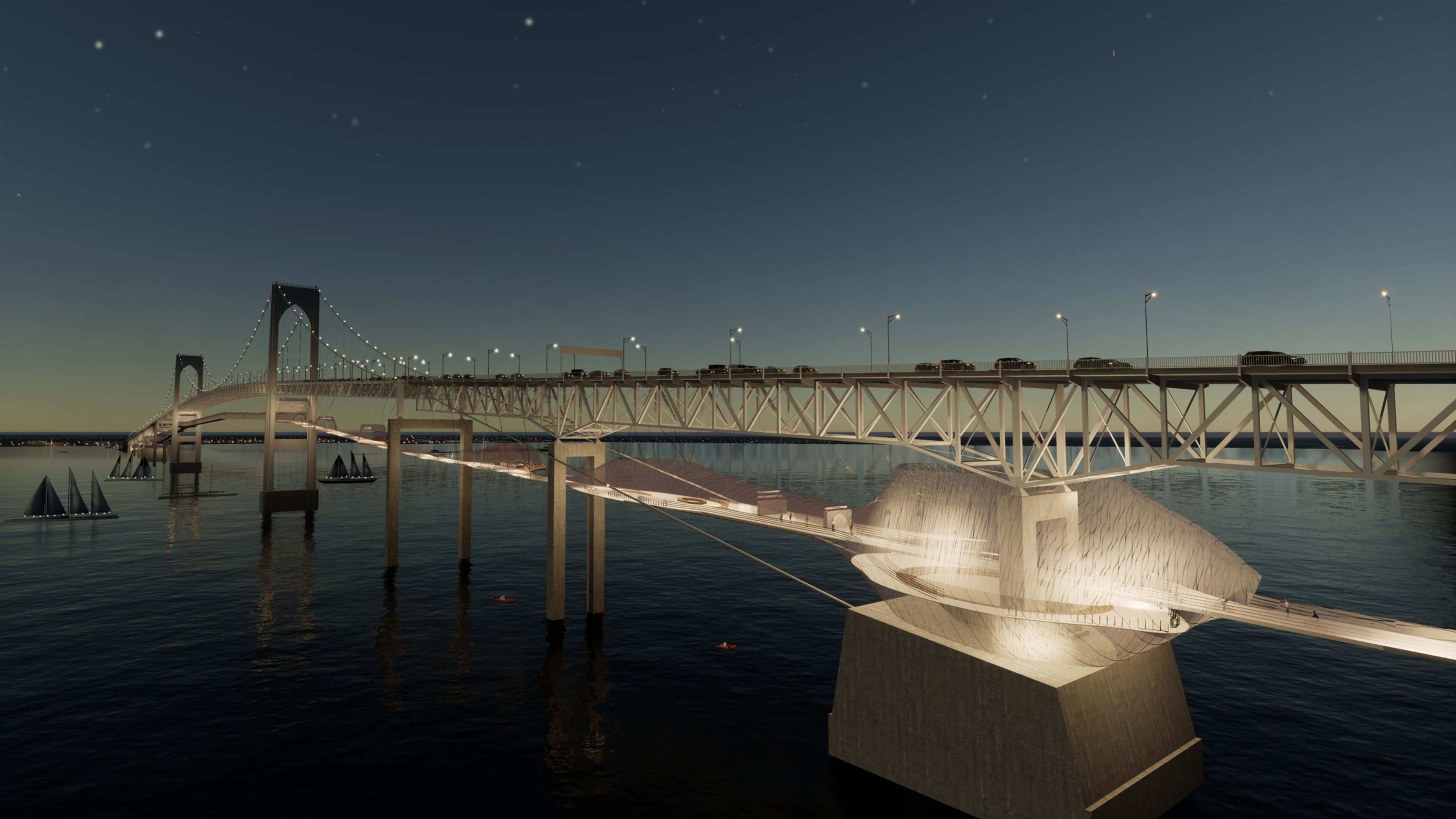Like most American bridges, a long bridge in Rhode Island that connects the towns of Jamestown and Newport is designed only for cars. On a typical summer day, it’s packed with traffic. But nearby college students figured out a new conceptual design that could let us retrofit many car-only bridges to include bike and pedestrian paths underneath.
“It’s not super easy to get to Newport unless you have a car,” says Liliane Wong, a professor of interior architecture at Rhode Island School of Design who led a class in adaptive reuse that considered how it might be possible to redesign the bridge. While some cities have added bike lanes on major bridges by taking away a lane of traffic—like the Bay Area’s Richmond Bridge—that’s unlikely to be feasible on the bridge to Newport, called the Pell Bridge, because of heavy congestion. High wind speeds would also make it a difficult ride.
It also isn’t easy to add another deck to an aging piece of infrastructure; the Pell Bridge is more than 50 years old and can’t support much additional weight. But a team of students in the class proposed 3D printing the new bike path from carbon fiber wrapped with a composite membrane, a material that’s both lightweight and strong. The deck would attach to the bridge’s existing columns. Smaller bridges have been 3D printed from other materials, including a 3D-printed steel pedestrian bridge that was recently installed in Amsterdam.

Though the design is conceptual and there are no plans to build it, Wong says there’s been local interest in the project. And a similar idea could potentially be used anywhere a bridge needs to transition to allow pedestrians and bikers. “These are adaptive reuse strategies that actually would work on any existing bridge,” she says.
Recognize your brand’s excellence by applying to this year’s Brands That Matter Awards before the final deadline, June 7.
Sign up for Brands That Matter notifications here.
